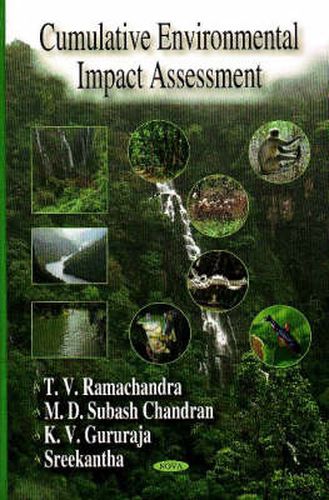Readings Newsletter
Become a Readings Member to make your shopping experience even easier.
Sign in or sign up for free!
You’re not far away from qualifying for FREE standard shipping within Australia
You’ve qualified for FREE standard shipping within Australia
The cart is loading…






An ecosystem is a complex of interconnected living organisms inhabiting a particular area or unit of space, together with their environment and all their interrelationships and relationships with the environment having a well-maintained ecological processes and interactions. It is characterised by the abundance of individual species populations; interspecies relationships; activity of organisms; physical and chemical characteristics of environment; flows of matter, energy, and information; and description of changes of these parameters with time. Hence, its surroundings can be categorised into physical and biological environment, which are self-defined, self-maintained and self-sustained dynamic natural systems. The physical environment comprises of lithosphere, hydrosphere and atmosphere, while the living beings in the biosphere constitute biological environment. The biosphere contains many delicate biological processes that have taken billions of years to evolve and there is a natural equilibrium for life sustaining processes dependent on relatively slow rates of recycling. These natural processes as well as resources are being over driven by human activities to meet the growing demands of the population. These developmental activities by humans ignoring the ecosystems and functional aspects are instrumental in bringing about irreversible changes in the ecosystem and their environment. The concern now is on the rise for the changes due to human induced activities that are proving detrimental, as it has exceeded the recycling rates of natural processes, which are altering the very nature of the environment. These changes are drastic, both to the environment and its inhabitants alike. Under such circumstances, it is necessary to do a retrospective analysis of the present situation to identify the degree of seriousness of different kinds of anthropogenic activities on the environment, plausible measures to curb further damaging to environment and better ways to live in harmony with the environment.
$9.00 standard shipping within Australia
FREE standard shipping within Australia for orders over $100.00
Express & International shipping calculated at checkout
An ecosystem is a complex of interconnected living organisms inhabiting a particular area or unit of space, together with their environment and all their interrelationships and relationships with the environment having a well-maintained ecological processes and interactions. It is characterised by the abundance of individual species populations; interspecies relationships; activity of organisms; physical and chemical characteristics of environment; flows of matter, energy, and information; and description of changes of these parameters with time. Hence, its surroundings can be categorised into physical and biological environment, which are self-defined, self-maintained and self-sustained dynamic natural systems. The physical environment comprises of lithosphere, hydrosphere and atmosphere, while the living beings in the biosphere constitute biological environment. The biosphere contains many delicate biological processes that have taken billions of years to evolve and there is a natural equilibrium for life sustaining processes dependent on relatively slow rates of recycling. These natural processes as well as resources are being over driven by human activities to meet the growing demands of the population. These developmental activities by humans ignoring the ecosystems and functional aspects are instrumental in bringing about irreversible changes in the ecosystem and their environment. The concern now is on the rise for the changes due to human induced activities that are proving detrimental, as it has exceeded the recycling rates of natural processes, which are altering the very nature of the environment. These changes are drastic, both to the environment and its inhabitants alike. Under such circumstances, it is necessary to do a retrospective analysis of the present situation to identify the degree of seriousness of different kinds of anthropogenic activities on the environment, plausible measures to curb further damaging to environment and better ways to live in harmony with the environment.